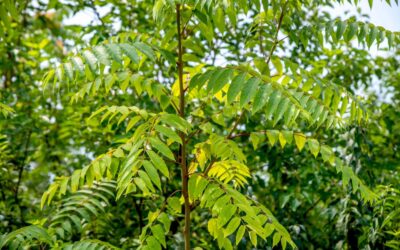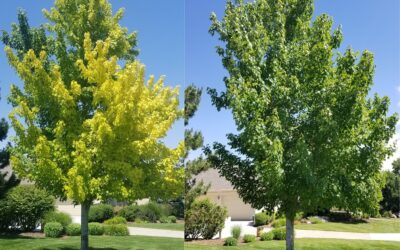Hawthorns grow naturally as small trees or shrubs and are often found massed along stream bottoms where their thorny branches intertwine, providing sheltered nesting places for birds and other animals. As many as 200 subspecies of hawthorn are widely dispersed throughout temperate regions of the Northern Hemisphere.
Edible Fruits
Its fruit is used for jams, jellies and beverages as well as in local recipes from Mexico to the Middle East and Asia. In Mexico, where the fruit is known as tecojote, it’s mixed with sugar and chili powder to make a popular candy called rielitotos. In England, tender spring leaves and flowers are often used in salads.
Triangular, Colorful, Flowering Foliage
Hawthorns have 2-3” triangular leaves with serrated edges and grow in clusters or spirally on long shoots. They can emerge in spring as reddish-purple in some species, turning dark green in summer and orange, scarlet or purple in fall. They produce showy white flowers in late May or early June that last for 7-10 days, followed by berries that are fed on by rabbits, foxes, and deer, as well as by the many birds that frequent them. The taller varieties develop a dense oval crown up to 30-40 feet tall.
Myths and Customs
Because of its long history, wide range and rugged, thorny habit, many myths and customs have evolved around the hawthorn. Gaelic people thought it marked the entrance to the “otherworld” where fairies lived and that it could heal broken hearts. Serbs and Croats claimed that stakes for killing vampires could only be made of hawthorn to be effective.
Medicinal Use
The hawthorn has been used medicinally in several cultures, both as a digestive aid and to treat circulatory problems. Recent studies have shown possible cardiovascular benefits, but have not been conclusive. Self-medication with hawthorn is not advisable because overdosing can cause side effects ranging from nausea to cardiac arrhythmia and dangerously low blood pressure.
Colorado Hawthorn Varieties
Three species of hawthorn trees are native to Colorado and are found throughout the state, except in arid regions. They all have white flowers and reddish fruit that darkens to deep purple when ripe.
The river hawthorn is a dark-fruited species common in the San Luis Valley and along Western Slope streams.Shiny-leaved hawthorn (also known as Cerro and Red-based Hawthorn) is widely dispersed in canyons and dry hillsides throughout Colorado at elevations up to 8,000 feet.The Fleshy or Big-Thorn Hawthorn is the widest-ranging North American species and is commonly found along streams in the eastern foothills, but is also scattered throughout the Western Slope. Other low-growing species can be planted as shrubs and as bonsai trees.
Growing Conditions, Maintenance, Disease Tolerance and Thorns
Hawthorns need full sun and tolerate a wide variety of well-drained soil. Once established, hawthorn trees are easy to maintain, are drought and disease resistant, but can be susceptible to insect infestations if not properly treated. They can be striking in landscapes, either as specimens or in groups, but keep them away from places children and pets play because their sharp three-inch thorns can cause painful injuries.
If you’re planning to add hawthorns to your landscape, or need maintenance of existing trees, Donovan Arborists offers complete landscaping services to suit your needs. Call us for a free estimate today at 303-623-8733.



